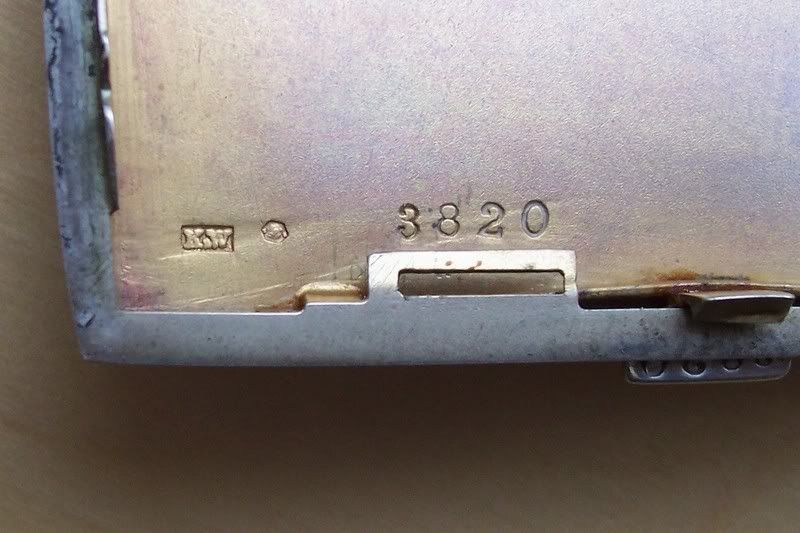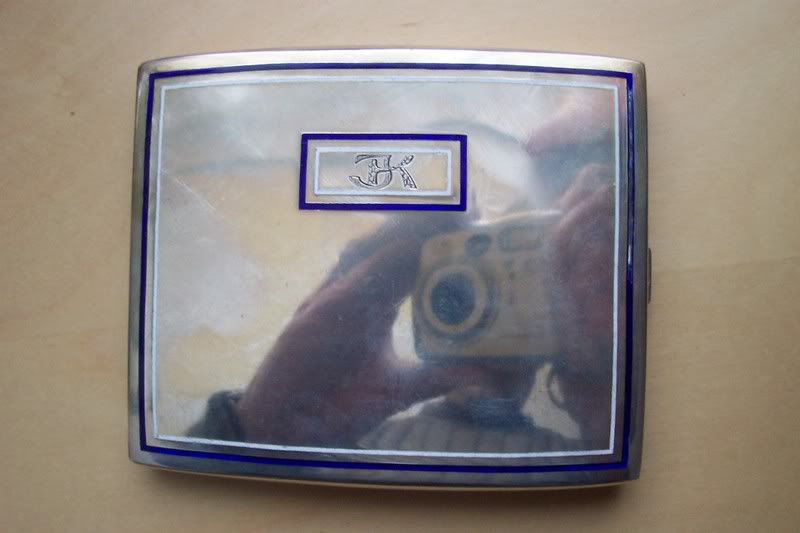Hi,
From this distance it certainly looks like the 'Dianakopf' mark indicating 900/1000 standard.
A close inspection should reveal a number on the left, in this case a '2', and a letter on the right. This letter will indicate the assay office shown at the bottom of the Austrian page.
http://www.925-1000.com/Faustria_02.html" onclick="window.open(this.href);return false;
The number, 3820, would be the factory mark, the parts would have made separately and the numbers most likely used for assembly purposes. They probably made a lot of different types.
Sorry I can't help with the maker.
Trev.


